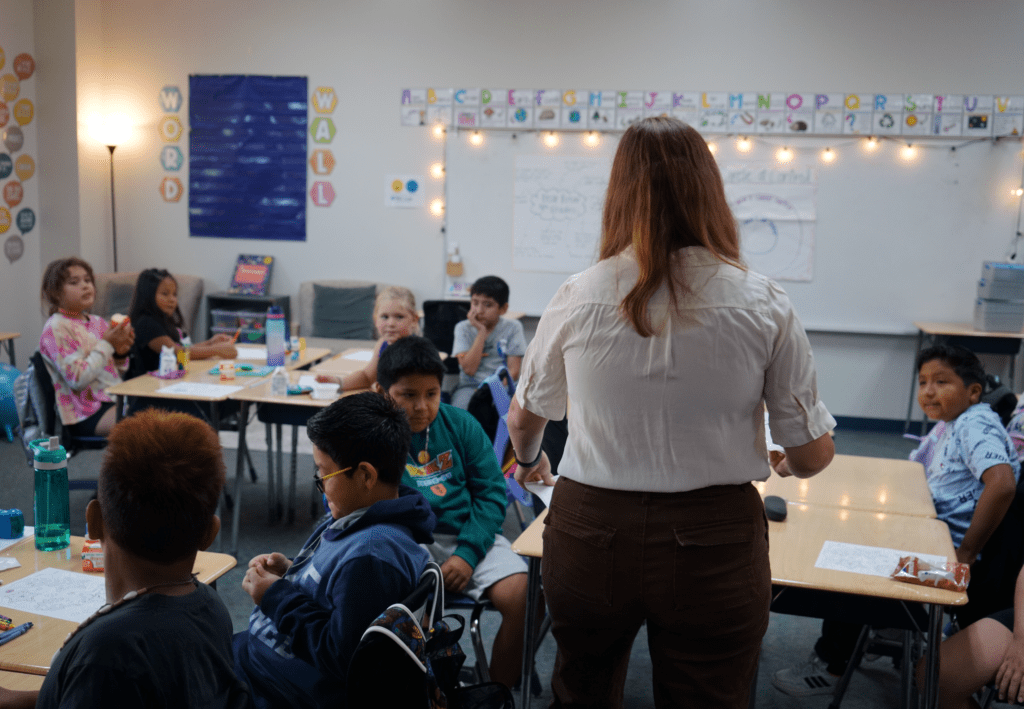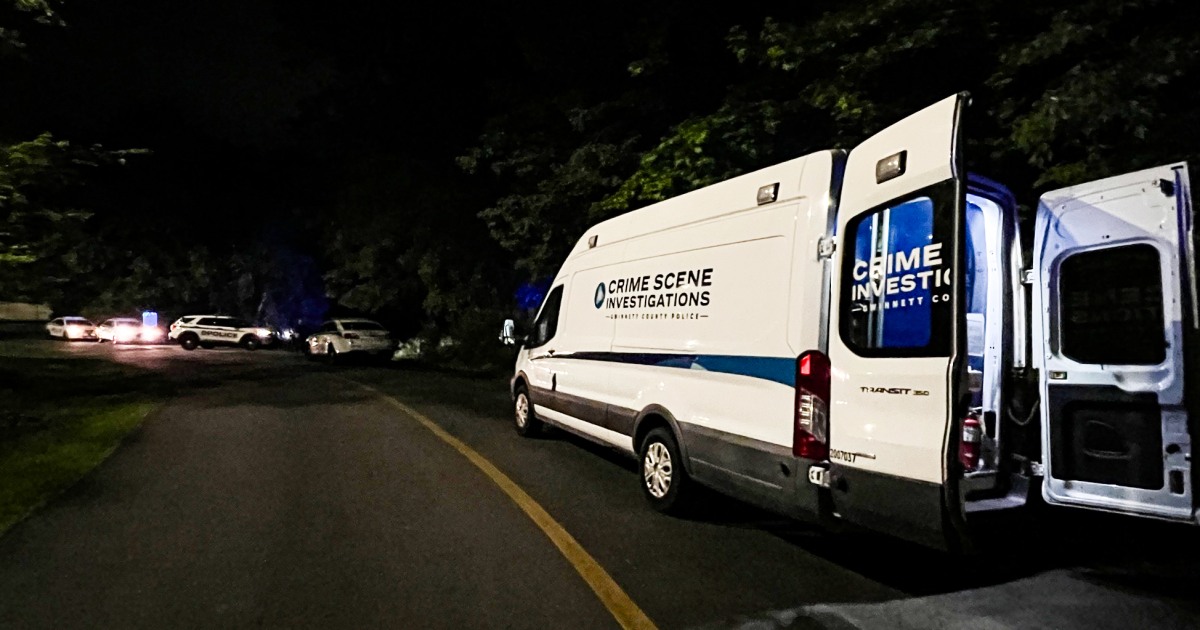Education
Biden Warns of ‘Sinister Forces’ Trying to Reverse Racial Progress

President Biden declared on Saturday that white supremacy is “the most dangerous terrorist threat to our homeland” and warned a predominantly Black audience that “sinister forces” embraced by his predecessor and putative challenger are trying to reverse generations of racial progress in America.
Mr. Biden never named former President Donald J. Trump in his sometimes stark commencement address to the graduating class of Howard University, the nation’s most prestigious historically Black college. He alluded, however, to Mr. Trump’s past statements to link him to racist elements in American society and suggest that the presidential campaign that has just gotten underway will determine whether justice will prevail over hate, fear and violence.
“There are those who demonize and pit people against one another,” Mr. Biden said. “And there are those who will do anything and everything, no matter how desperate or immoral, to hold onto power. That’s never going to be an easy battle. But I know this — the oldest, most sinister forces may believe they’ll determine America’s future. But they are wrong. We will determine America’s future. You will determine America’s future.”
Wearing blue and white academic robes, the president sought to enlist the young graduates in what he presented as the cause of this moment. He cited the killing of George Floyd by a police officer in 2020, which touched off widespread protests against police brutality, and expressed empathy with Black drivers who are fearful when they are pulled over by officers.
“Fearless progress toward justice often meets ferocious pushback from the oldest and most sinister of forces,” he said. “That’s because hate never goes away. I thought when I graduated that we could defeat hate. But it never goes away.”
Likewise, Mr. Biden said that “after the election and re-election of the first Black American president, I had hoped the fear and violence and hate was significantly losing ground.”
He discovered otherwise, he said, when neo-Nazis and white supremacists clashed with counterprotesters in Charlottesville, Va., in August 2017, and he recounted Mr. Trump’s reaction. “What did you hear?” he asked. “That famous quote: ‘There are very fine people on both sides.’ That’s when I knew, and I’m not joking, that’s when I knew I had to stay engaged and get back into public life.”
Mr. Trump’s supporters have said his line has been distorted and note that he did at one point condemn neo-Nazis. But as he has opened a campaign to recapture the presidency, Mr. Trump has more openly embraced racist and extremist elements in American life. Last winter, he hosted for dinner the rap artist Ye, who has made antisemitic statements, and Nick Fuentes, a prominent white supremacist who attended the far-right Charlottesville rally.
The choice of Howard offered Mr. Biden an opportunity to shore up support in the most loyal constituency in the Democratic Party, one that he needs to win re-election next year. While polls show continued strong support for Mr. Biden among Black voters, political analysts and party strategists have expressed concern about an enthusiasm gap that could complicate prospects for the president, who needs high turnout from his base.
Mr. Biden has been stymied on goals like cracking down on police brutality and bolstering voting rights. He did sign an executive order on federal law enforcement last year, although crucial pieces of the order have not been implemented. Many supporters say he has fallen short on his pledge to make systemic changes to the criminal justice system.
But he chose Kamala Harris (a Howard graduate) as the first Black vice president; appointed the first Black woman to the Supreme Court, Justice Ketanji Brown Jackson; and has put more Black women on the federal bench than every other president combined. Unemployment among Black Americans fell to a record low of 4.7 percent in April, and the gap between white and Black jobless rates shrank to its smallest ever measured.
Of particular interest to his audience on Saturday, Mr. Biden has developed a program to forgive $400 billion in student loans over the next few decades, wiping out up to $20,000 apiece for those who qualify. But the Supreme Court appears poised to invalidate it.
Mr. Biden won 92 percent of Black voters in 2020, but only 58 percent said they approved of his performance in the latest Associated Press-NORC Center for Public Affairs Research poll. A May survey by the Economist and YouGov put his approval among Black adults at 71 percent, but only 46 percent wanted him to run again.
Mr. Biden found a friendly but not exactly exuberant crowd on Saturday. Graduating seniors and their families filled much of Capital One Arena, the home of the Washington Capitals and Wizards, and greeted him warmly, although a dozen stood in protest, some holding signs about issues like military research. The ambivalence among students and graduates was evident in interviews on campus before the ceremony.
“He’s a pretty good person,” Mariah Davis, 19, a mechanical engineering major, said of Mr. Biden. “He’s just really trying to advocate for a lot of groups of people who are unheard.”
But some students said they were not sure they could connect with him. “We feel a little strange about him coming to commencement because obviously he can teach us things about values, but what is he going to say that hasn’t been said before?” said Alisa Drake, 19, a sophomore. “What can Biden say to us as Black students going out into the work force?”
If the choice next year was between Mr. Biden and a Republican, she said she would vote for Mr. Biden. But she was lukewarm about it. “I’m not really excited,” she said. “I feel like there hasn’t been a candidate recently that has just caught my eye, that is just like, ‘Wow, they’re really about something and interested in helping my generation.’”

Education
Video: Police Use Pepper Spray on Protesters on G.W.U.’s Campus

new video loaded: Police Use Pepper Spray on Protesters on G.W.U.’s Campus
transcript
transcript
Police Use Pepper Spray on Protesters on G.W.U.’s Campus
Police officers arrested 33 pro-Palestinian protesters and cleared a tent encampment on the campus of George Washingon University.
-
“The Metropolitan Police Department. If you are currently on George Washington University property, you are in violation of D.C. Code 22-3302, unlawful entry on property.” “Back up, dude, back up. You’re going to get locked up tonight — back up.” “Free, free Palestine.” “What the [expletive] are you doing?” [expletives] “I can’t stop — [expletives].”
Recent episodes in Israel-Hamas War
Education
How Counterprotesters at U.C.L.A. Provoked Violence, Unchecked for Hours

A satellite image of the UCLA campus.
On Tuesday night, violence erupted at an encampment that pro-Palestinian protesters had set up on April 25.
The image is annotated to show the extent of the pro-Palestinian encampment, which takes up the width of the plaza between Powell Library and Royce Hall.
The clashes began after counterprotesters tried to dismantle the encampment’s barricade. Pro-Palestinian protesters rushed to rebuild it, and violence ensued.
Arrows denote pro-Israeli counterprotesters moving towards the barricade at the edge of the encampment. Arrows show pro-Palestinian counterprotesters moving up against the same barricade.
Police arrived hours later, but they did not intervene immediately.
An arrow denotes police arriving from the same direction as the counterprotesters and moving towards the barricade.
A New York Times examination of more than 100 videos from clashes at the University of California, Los Angeles, found that violence ebbed and flowed for nearly five hours, mostly with little or no police intervention. The violence had been instigated by dozens of people who are seen in videos counterprotesting the encampment.
The videos showed counterprotesters attacking students in the pro-Palestinian encampment for several hours, including beating them with sticks, using chemical sprays and launching fireworks as weapons. As of Friday, no arrests had been made in connection with the attack.
To build a timeline of the events that night, The Times analyzed two livestreams, along with social media videos captured by journalists and witnesses.
The melee began when a group of counterprotesters started tearing away metal barriers that had been in place to cordon off pro-Palestinian protesters. Hours earlier, U.C.L.A. officials had declared the encampment illegal.
Security personnel hired by the university are seen in yellow vests standing to the side throughout the incident. A university spokesperson declined to comment on the security staff’s response.
Mel Buer/The Real News Network
It is not clear how the counterprotest was organized or what allegiances people committing the violence had. The videos show many of the counterprotesters were wearing pro-Israel slogans on their clothing. Some counterprotesters blared music, including Israel’s national anthem, a Hebrew children’s song and “Harbu Darbu,” an Israeli song about the Israel Defense Forces’ campaign in Gaza.
As counterprotesters tossed away metal barricades, one of them was seen trying to strike a person near the encampment, and another threw a piece of wood into it — some of the first signs of violence.
Attacks on the encampment continued for nearly three hours before police arrived.
Counterprotesters shot fireworks toward the encampment at least six times, according to videos analyzed by The Times. One of them went off inside, causing protesters to scream. Another exploded at the edge of the encampment. One was thrown in the direction of a group of protesters who were carrying an injured person out of the encampment.
Mel Buer/The Real News Network
Some counterprotesters sprayed chemicals both into the encampment and directly at people’s faces.
Sean Beckner-Carmitchel via Reuters
At times, counterprotesters swarmed individuals — sometimes a group descended on a single person. They could be seen punching, kicking and attacking people with makeshift weapons, including sticks, traffic cones and wooden boards.
StringersHub via Associated Press, Sergio Olmos/Calmatters
In one video, protesters sheltering inside the encampment can be heard yelling, “Do not engage! Hold the line!”
In some instances, protesters in the encampment are seen fighting back, using chemical spray on counterprotesters trying to tear down barricades or swiping at them with sticks.
Except for a brief attempt to capture a loudspeaker used by counterprotesters, and water bottles being tossed out of the encampment, none of the videos analyzed by The Times show any clear instance of encampment protesters initiating confrontations with counterprotesters beyond defending the barricades.
Shortly before 1 a.m. — more than two hours after the violence erupted — a spokesperson with the mayor’s office posted a statement that said U.C.L.A officials had called the Los Angeles Police Department for help and they were responding “immediately.”
Officers from a separate law enforcement agency — the California Highway Patrol — began assembling nearby, at about 1:45 a.m. Riot police with the L.A.P.D. joined them a few minutes later. Counterprotesters applauded their arrival, chanting “U.S.A., U.S.A., U.S.A.!”
Just four minutes after the officers arrived, counterprotesters attacked a man standing dozens of feet from the officers.
Twenty minutes after police arrive, a video shows a counterprotester spraying a chemical toward the encampment during a scuffle over a metal barricade. Another counterprotester can be seen punching someone in the head near the encampment after swinging a plank at barricades.
Fifteen minutes later, while those in the encampment chanted “Free, free Palestine,” counterprotesters organized a rush toward the barricades. During the rush, a counterprotester pulls away a metal barricade from a woman, yelling “You stand no chance, old lady.”
Throughout the intermittent violence, officers were captured on video standing about 300 feet away from the area for roughly an hour, without stepping in.
It was not until 2:42 a.m. that officers began to move toward the encampment, after which counterprotesters dispersed and the night’s violence between the two camps mostly subsided.
The L.A.P.D. and the California Highway Patrol did not answer questions from The Times about their responses on Tuesday night, deferring to U.C.L.A.
While declining to answer specific questions, a university spokesperson provided a statement to The Times from Mary Osako, U.C.L.A.’s vice chancellor of strategic communications: “We are carefully examining our security processes from that night and are grateful to U.C. President Michael Drake for also calling for an investigation. We are grateful that the fire department and medical personnel were on the scene that night.”
L.A.P.D. officers were seen putting on protective gear and walking toward the barricade around 2:50 a.m. They stood in between the encampment and the counterprotest group, and the counterprotesters began dispersing.
While police continued to stand outside the encampment, a video filmed at 3:32 a.m. shows a man who was walking away from the scene being attacked by a counterprotester, then dragged and pummeled by others. An editor at the U.C.L.A. student newspaper, the Daily Bruin, told The Times the man was a journalist at the paper, and that they were walking with other student journalists who had been covering the violence. The editor said she had also been punched and sprayed in the eyes with a chemical.
On Wednesday, U.C.L.A.’s chancellor, Gene Block, issued a statement calling the actions by “instigators” who attacked the encampment unacceptable. A spokesperson for California Gov. Gavin Newsom criticized campus law enforcement’s delayed response and said it demands answers.
Los Angeles Jewish and Muslim organizations also condemned the attacks. Hussam Ayloush, the director of the Greater Los Angeles Area office of the Council on American-Islamic Relations, called on the California attorney general to investigate the lack of police response. The Jewish Federation Los Angeles blamed U.C.L.A. officials for creating an unsafe environment over months and said the officials had “been systemically slow to respond when law enforcement is desperately needed.”
Fifteen people were reportedly injured in the attack, according to a letter sent by the president of the University of California system to the board of regents.
The night after the attack began, law enforcement warned pro-Palestinian demonstrators to leave the encampment or be arrested. By early Thursday morning, police had dismantled the encampment and arrested more than 200 people from the encampment.
Education
Video: President Biden Addresses Campus Protests

new video loaded: President Biden Addresses Campus Protests
transcript
transcript
President Biden Addresses Campus Protests
President Biden defended the right of demonstrators to protest peacefully, but condemned the “chaos” that has prevailed at many colleges nationwide.
-
Violent protest is not protected. Peaceful protest is. It’s against the law when violence occurs. Destroying property is not a peaceful protest. It’s against the law. Vandalism, trespassing, breaking windows, shutting down campuses, forcing the cancellation of classes and graduations — none of this is a peaceful protest. Threatening people, intimidating people, instilling fear in people is not peaceful protest. It’s against the law. Dissent is essential to democracy, but dissent must never lead to disorder or to denying the rights of others, so students can finish the semester and their college education. There’s the right to protest, but not the right to cause chaos. People have the right to get an education, the right to get a degree, the right to walk across the campus safely without fear of being attacked. But let’s be clear about this as well. There should be no place on any campus — no place in America — for antisemitism or threats of violence against Jewish students. There is no place for hate speech or violence of any kind, whether it’s antisemitism, Islamophobia or discrimination against Arab Americans or Palestinian Americans. It’s simply wrong. There’s no place for racism in America.
Recent episodes in Politics
-

 World1 week ago
World1 week agoStrack-Zimmermann blasts von der Leyen's defence policy
-

 Politics1 week ago
Politics1 week agoStefanik hits special counsel Jack Smith with ethics complaint, accuses him of election meddling
-

 Politics1 week ago
Politics1 week agoThe White House has a new curator. Donna Hayashi Smith is the first Asian American to hold the post
-

 Politics1 week ago
Politics1 week agoDemocratic mayor joins Kentucky GOP lawmakers to celebrate state funding for Louisville
-

 World1 week ago
World1 week agoTurkish police arrest hundreds at Istanbul May Day protests
-

 News1 week ago
News1 week agoVideo: Police Arrest Columbia Protesters Occupying Hamilton Hall
-

 Politics1 week ago
Politics1 week agoNewsom, state officials silent on anti-Israel protests at UCLA
-

 News1 week ago
News1 week agoPolice enter UCLA anti-war encampment; Arizona repeals Civil War-era abortion ban













